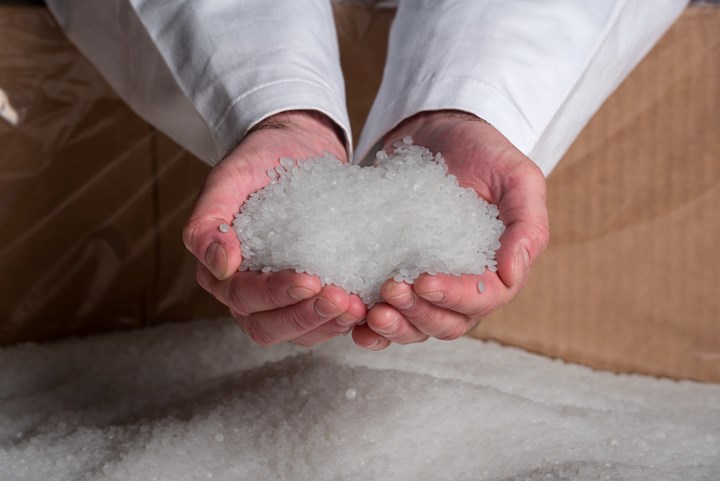In terms of sustainability measures, monomaterial structures are already making good headway and will evolve even further.
I expect we are not only going to see continued growth in this trend but with even more ‘sustainability’ built in to monolayer structures, something that is likely underway. By that I’m referring to the use of mechanically recycled polyolefins and/or chemically recycled grades that can replace at least some of the layers of multilayer all-polyolefin packaging.
The Growth of PE
• Moving from multi-material to monomaterial, recyclable flexible films: In many food-packaging applications, including stand-up pouches and flow wrappers, films are commonly made using mixed materials in the structure. Numerous brand owners are working with suppliers and converters to redesign those structures to eliminate foil, nylon or other materials in order to meet both consumer demand for sustainability and the aggressive recyclability timelines that the plastics industry has set through the American Chemistry Council. Where multilayer blown and cast films, along with lamination, have been the dominant production technologies for many applications, oriented PE in films like machine-direction or biaxially oriented PE are being explored now to deliver stiffer and tougher all-PE films.
• Conversion of two-piece (PP + PE liner) to one-piece (all-PE) closures: The movement from two-piece to one-piece closures in carbonated soft-drink and hot-fill applications has begun in earnest in North America, as the mono-material composition makes closures easier to recycle. That means just one part must provide all the required properties, and the interaction between the closure design, the resin and the way it’s molded are all critical to producing closures that will perform consistently.
• Expanding the uses of post-consumer recycled (PCR) content: Across the industry there is much R&D on technology for creating “clean” recycled PE streams and finding ways to incorporate them into finished products with performance comparable to virgin resin.
Monomaterial Caps and Closures
In October 2021, we reported on caps and closures made of HDPE and how Nova Chemicals expects this to the future.
Expect HDPE with post-consumer recycle (PCR) and post-industrial recycle (PIR) content to become dominant in future caps and closures for foods and beverages as well as for non-food packaging. This is the view of Brant Wunderlich, Nova’s market manager for caps & closures.
While he concedes that today’s PP caps and closures outnumber HDPE by a two-to-one margin, he sees this trend already changing as HDPE gains traction. “Polyethylene has a much higher recycling rate than PP, so we are aiming to design for recycle as well as material reduction. Polypropylene caps typically have an LDPE liner, so HDPE enables an all-PE closure, making it a better partner to PET beverage bottles that are currently much more highly recycled than PP/LDPE caps.”
Also likely to play a significant role in closures of the future are “tethered” closures to ensure the cap stays on the bottle and enters the recycle stream with it so it does not become litter. These are already required by EU regulation that takes effect in 2024. Wunderlich concludes that PCR incorporation and tethering are likely to shift industry priorities.
The full article can be found HERE.

